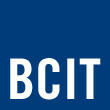Master of Science in Ecological Restoration Applied Research Projects
This is Canada’s first master’s program specializing in Ecological Restoration and is offered as a joint program between British Columbia Institute of Technology (BCIT) and Simon Fraser University (SFU). The MSc in Ecological Restoration combines the strong technical and applied (experiential) knowledge at BCIT with SFU’s fundamental (contextual) basic science and community engagement expertise.
Pages
-
- The impacts of exotic Typha on benthic invertebrate communities in the South Arm of the Fraser River Estuary
- In recent decades, the exotic cattail Typha angustifolia and its hybrid Typha x glauca have invaded the Fraser River estuary. The impacts from this invasion on benthic macroinvertebrate communities, however, are yet to be studied. Macroinvertebrates play important roles in food chains, trophic dynamics, and nutrient cycling and are potentially at risk from this invasion. In this study, I compared the benthic invertebrate communities between exotic cattail stands and native vegetation stands at 25 paired sites. Sediment cores were analyzed for invertebrate abundance, biomass, and Shannon Wiener diversity index, and it was found that biomass and abundance were lower in exotic cattail when compared to native vegetation, however, there was no difference in diversity. Given the proximity to side channels, tidal inundation time would be a logical explanation for the differences in the benthic communities; however, it was not found to be a significant predictor. Given the invasive nature of exotic cattail and the correlations that were found, cattail should be removed in restoration projects where possible., Fraser River, Typha x glauca, Estuary, Invasive species, Typha angustifolia
-
- The scale of ecological restoration: restoring steelhead habitat in the Oktwanch Watershed, Vancouver Island, B.C.
- Forestry practices are thought to be the major cause of degraded salmonid habitat and declining steelhead populations in the Oktwanch River on Vancouver Island. Large woody debris installations and channel modifications were completed in Reach 1 of the Oktwanch River and adjacent side channels in 2001 to provide spawning and rearing habitat for multiple salmonid species and prevent further degradation, but were ultimately unsuccessful. This study investigated if watershed-scale restoration, rather than reach-scale, is necessary to restore this habitat for steelhead in the Oktwanch River indefinitely. This was achieved through an assessment of fish habitat in Reach 1 of the Oktwanch River and adjacent side channels and spatial analysis of the Oktwanch watershed using Landsat historical aerial imagery and i-Tree Canopy. The findings from this study suggest watershed-scale changes to forestry practices are required to restore steelhead populations in the Oktwanch River., forestry practices, watershed-scale restoration, reach-scale, woody debris installations, channel modifications
-
- Throwing shade
- Reed canarygrass (Phalaris arundinacea) is an invasive grass common in wetlands and riparian areas throughout the Pacific Northwest. It is highly adaptable and resistant to many control methods, but is vulnerable to shading. We sought to control reed canarygrass by establishing desirable native shrubs to overtop and shade it. Plots were rototilled, mulched, live-staked, and monitored for 2-6 growing seasons. We tested 1) effective planting densities by live-staking hardhack (Spiraea douglasii) at 50, 30, and 15 cm spacing, 2) relative species performance by planting hardhack, red-osier dogwood (Cornus sericea), and thimbleberry (Rubus parviflorus), all at 30 cm densities, and 3) alternative site preparation methods by using cardboard mulch or excavating the top 20 cm of topsoil. Higher planting density significantly reduced reed canarygrass cover and biomass. Both hardhack and red-osier dogwood successfully suppressed reed canarygrass, though thimbleberry did not. No significant differences between site preparation methods were observed., reed canarygrass, Phalaris arundinacea, invasive species management, live staking, planting density, Spiraea douglasii
-
- Using 10-years of population monitoring data to assess breeding productivity of the Oregon Spotted Frog (Rana pretiosa)
- Relationships between changing environmental variables and amphibian populations have been understudied. Yet, alterations to temperature and precipitation have been suggested as contributors to the decline of some pond-breeding species, such as the Oregon Spotted Frog (Rana pretiosa). R. pretiosa has been classified as the most endangered amphibian in Canada, yet the cause for its decline is unknown. Therefore, this paper examined associations between temperature and precipitation, and R. pretiosa population trends, using a 10-year data set from two breeding populations in the Lower Mainland of British Columbia. Timing of oviposition was positively related to higher temperature and increased precipitation within both populations (p<0.05). No statistical relationship was determined between egg mass productivity and temperature or precipitation; however, this paper proposes that further research, consistent protocols and longer study periods, is necessary in order to determine environmental variables as possible predictors of population success. This paper recommends the evaluation of breeding success through survivorship studies, as such methods provide insight into productivity as the primary determinant for population recruitment. Further, ecological restoration efforts can be implemented to help ameliorate negative consequences climate change poses on reproductive success., amphibian, climate change, conservation, ecological restoration, endangered, population dynamics, population monitoring, survivorship
